Have you ever bought a shirt or sweater only to have second thoughts about the necessity of that purchase before you get the item home? Do I really need that shirt? Can I get by without that sweater? Do I already own something that will suffice? Sometimes, rules in the National Electrical Code (NEC) can be like that as well. The Code will make a statement saying, “You cannot do this or that.” Then “conditions” or exceptions will be added saying, “Well, you can do this, but do it this way.”
For example, today’s Code requirements state that an intentionally grounded conductor (sometimes referred to as a neutral conductor) is required to be installed at all switch locations where switches control lighting loads that are supplied by a grounded general-purpose branch circuit, or are they? Currently, five conditions and two situations exist that would eliminate the need for a grounded conductor at such a switch location. These requirements can be found at NEC 404.2(C). In this article, we look closer at these switching requirements and how we arrived where we are currently at in today’s Code.
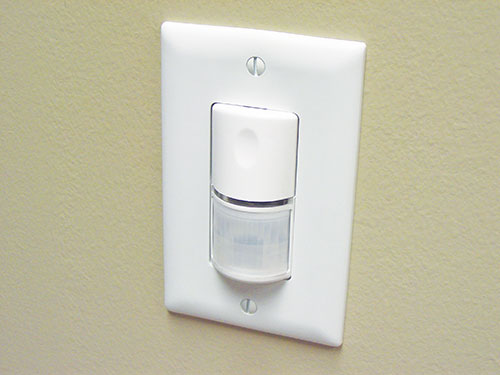
2011 NEC
During the 2011 NEC revision cycle, a proposal was accepted by NEC Code Making Panel (CMP) 9 to require a grounded conductor at every switch location where switches control lighting loads supplied by a grounded general purpose branch circuit. This 2011 NEC main rule had an exception with two specific conditions. The first condition to the exception permitted the grounded circuit conductor to be omitted from the switch enclosure where the wiring method employed was a raceway system that allowed the grounded conductor to be added to the switch location at a later date (when and if needed). The raceway had to be of sufficient cross-sectional area to accommodate the addition of the grounded circuit conductor of the lighting circuit to the switch location. The other condition described in the exception dealt with cable assemblies entering the switch box through a framing cavity that was open at the top or bottom on the same floor level, or through a wall, floor, or ceiling that is unfinished on one side.
All of this was brought about with electronic lighting control devices (such as occupancy sensors) in mind. Many of these electronic lighting control devices require a standby neutral current to maintain a ready state of detection for the function of said devices. The use of a grounded conductor also allows immediate switching of the load to the “on” condition. These types of sensing devices must have standby current when they are in the “off” condition as well as using the grounded conductor for this standby current flow. Up until this grounded conductor requirement, in most cases (particularly in commercial installations), a grounded conductor was not provided in the switch box for switches controlling lighting loads. With the grounded conductor not present, inventive installers would employ the equipment grounding conductor for the required standby current of these control devices. This is not a good practice to rely upon due to the introduction of circulating current onto the equipment grounding conductor system. Occupancy sensors are permitted by their product standard (UL 773A) to have a current of up to 0.5 mA on the equipment grounding conductor. Having current flowing at that level when the device is presumed to be off could create a potential risk to installers as well.

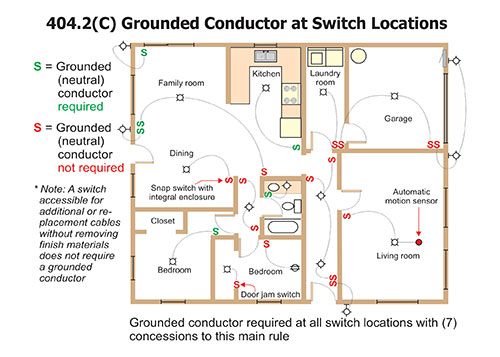
When this requirement was incorporated into the NEC, occupancy sensors were becoming increasingly popular due to emerging energy codes and the desire to conserve energy; this is still true today. An occupancy sensor can be installed in practically any switch location. It is impractical to expect the customer or installer to anticipate all instances where an occupancy sensor will be installed.
The incorporation of this grounded conductor requirement necessitates the presence of a grounded conductor at most switch locations (see exceptions). It also ensures that future designs will take advantage of the presence of a grounded conductor in the switch box and no longer require the design of the product or the installer to rely on the use of the equipment grounding conductor to conduct the standby current to these devices. Since revisions to the NEC often result in advances in technology concerning electrical installations, mandating a grounded (neutral) conductor in switch boxes encouraged device manufacturers to develop products that need a power supply to deliver advances in the control of electricity and reduce improper wiring methods utilizing an equipment grounding conductor.
2014 NEC
For the 2014 NEC, several proposals and comments were submitted to CMP-9 with suggestive text and examples of switch locations where the presence of a grounded conductor might not be necessary. Some of these locations that were recognized by the 2014 NEC included switch locations that do not serve a habitable room or bathroom, such as a closet light switch or a door-jam switch where an occupancy sensor or other electronic device is highly unlikely to be installed. A room or area where two 3-way and/or 4-way switches are installed to serve the same area is another location where a grounded conductor is not required at every switch location. An occupancy or motion sensor would only be installed at one of these switch locations, not all of these switch locations. A grounded conductor installed at one of these switches would satisfy the requirements of 404.2(C).
Another switch location excused from the presence of a grounded conductor in the 2014 NEC was a switch controlling a receptacle outlet as allowed by 210.70(A)(1) Ex. No. 1. As no occupancy sensor will likely ever be listed for use with receptacle outlets, there is no need for a grounded conductor at this switch location. The connected load applied to receptacle outlets is inherently uncontrollable and unpredictable in many aspects involving listing of occupancy sensors for the same. Snap switches with integral enclosures complying with 300.15(E) are exempt from this grounded conductor requirement as well. NEC Section 300.15(E) permits switches with integral enclosures “in lieu of a box or conduit body.” These integral enclosure switches have no separate box for mounting other devices such as occupancy sensors or other electronic devices. One other switch location accepted during the 2014 NEC that does not require a grounded conductor to be present was where automatic control of lighting has been provided (see photo 3). Some lighting designs use conventional snap switches at the conventional wall switch locations to turn lights on and off as needed, but in series with an occupancy sensor mounted in the ceiling; this allows for automatic lighting control when the room is unoccupied, but also allows a means to manually turn the lights off in an occupied room to project slides on a screen, etc.
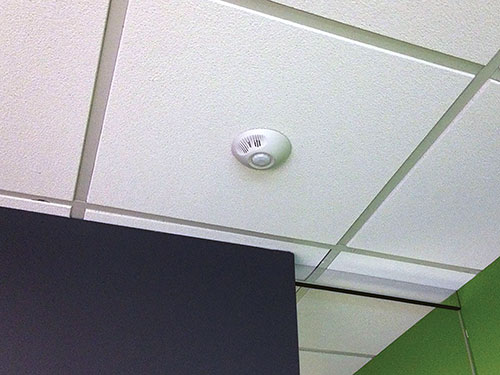
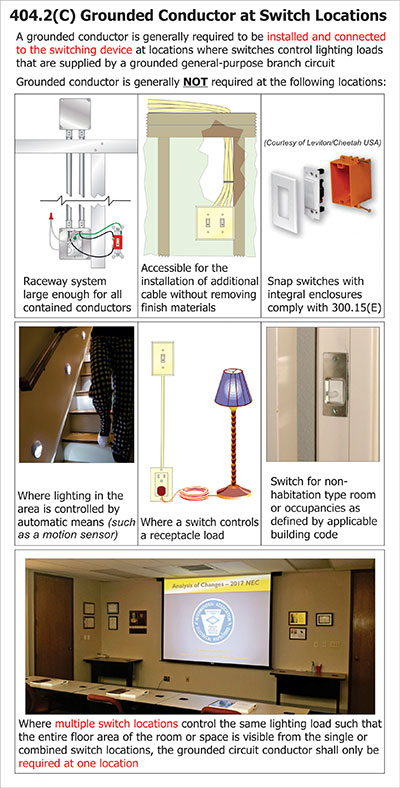
Rather than add more to the existing exception, CMP-9 chose to incorporate the existing exception and the added provisions into a list format and add positive language to this requirement. For the 2014 NEC, an attempt was made to simplify the rule and eliminate the lengthy and confusing exception. The opening paragraph to the main requirement was changed editorially to improve the structure and to complement the list of conditions that followed.
2017 NEC
The odyssey of requiring a grounded conductor at every switch location where switches control lighting loads supplied by a grounded general purpose branch circuit (with conditions and exception) continued with the implementation of the 2017 NEC. There are currently existing listed electronic lighting control devices readily available on the market that direct the installer to utilize the “green” or bare equipment-grounding conductor for connection to the device to act as the grounded conductor to power the electronics with 120 volts. This information is included in the manufacturer’s instructions for these devices; which puts inspectors and electrical contractors alike in a dilemma when electronic lighting control devices are still being supplied that not only permit but require the equipment grounding conductor to be connected to the device to power the electronics with line voltage. From the inception of 404.2(C), CMP-9 intended to begin a process that would ultimately result in no current being intentionally introduced onto the equipment grounding conductor system due to the installation of electronic switching devices such as an occupancy sensor. The equipment-grounding conductor should not be used to complete this circuit under any circumstance.
The latest attempt to eliminate this intentionally introduced current onto the equipment grounding conductor resulted in further revisions to 404.2(C) for the 2017 NEC. One of the first changes was in response to the indication that 404.2(C) literally required a grounding conductor to be “present” at switch locations, but did not demand that the supplied grounded conductor actually be used or “connected” to the switching device. To that end, the first sentence at 404.2(C) was revised to state that the grounded circuit conductor be “installed” at the switch locations rather than simply “provided.” If that modest change is too subdued, new text was added further down in the requirement that more directly states, “the grounded conductor shall be extended to any switch location as necessary and shall be connected to switching devices that require line-to-neutral voltage to operate the electronics of the switch in the standby mode.”
aqQPhoto 4. Occupancy sensor which permits the equipment grounding conductor to carry the operational and stand-by neutral load of the switching device.This requirement goes on to reference 404.22, which is a new section under Part II of Article 404 for the “Construction Specifications” for a switching device. This new part of 404.2(C) addresses the fact that electronic lighting control switches must be listed and “shall not introduce current on the equipment grounding conductor during normal operation.” This requirement has a future effective date of January 1, 2020, introduced in an exception to 404.2(C). This future effective date provides the manufacturers a reasonable time frame to produce these switching devices with grounded conductor compatibility while being able to exhaust existing inventory of switching devices that currently allow the equipment grounding conductor to carry the operational and stand-by neutral load of these devices. This exception further relieves this connection requirement from “replacement or retrofit switches installed in locations prior to local adoption of 404.2(C) and where the grounded conductor cannot be extended without removing finish materials.” This will allow some continuation of older designs, which is warranted for replacement or retrofit installations in existing or previous applications.
This new exception goes on to limit the actual number of electronic lighting control switches on a branch circuit to “not exceed 5” and the number connected to any feeder on the load side of a system or main bonding jumper to “not exceed 25.” A total of 0.5 mA of neutral current is the acceptable amount of current tolerance allowed by manufacturers of devices such as an occupancy sensor that can be allowed to flow over an equipment grounding return path and continue to be used safely. Using this 0.5 mA value, five electronic lighting control switches (listed to permit the equipment grounding conductor for neutral load connection) would be limited to the worst-case neutral current that the equipment grounding system would be expected to carry to 2.5 mA on branch circuit conductors, and 12.5 mA on feeder conductors. These electronic lighting control switches have been used for decades with no reported loss experience, but as they continue to increase in demand, ever-increasing neutral current loading will be imposed on an equipment grounding conductor system that is not and never will be designed for routing neutral load current.
Finally, for the 2017 NEC, the previous seven “conditions” in which a grounded conductor was not required to be installed at lighting switch locations has been revised and reduced to only five “conditions.” Two of the previous conditions were moved from conditions or reasons to not provide the grounded conductor to their new home in the parent text of 404.2(C) and reworded into positive language. This revision makes it much clearer where the grounded conductor is required and where it would be exempted from being included. A grounded conductor is required at switch locations where general-purpose branch circuits serve “bathrooms, hallways, stairways, or rooms suitable for human habitation or occupancy as defined in the applicable building code.” A “Habitable Space” is defined in structural and residential building codes as: “A space in a building for living, sleeping, eating or cooking.” This definition should make it clear that a grounded conductor is not required at switch locations such as snap switch or door-jam switch for closet lighting, since a closet is not considered “habitable space.” An electronic lighting control device, such as an occupancy sensor, is extremely unlikely, if not impossible, to be installed at a door-jam switch.
Office spaces are typically described as “occupancies” in the applicable building codes and not as “habitable space.” The revised wording will make it crystal clear that these commercial occupancies are also under the umbrella of this grounded conductor at switch location requirement. While applying to both, the limitation on the actual number of electronic lighting control switches on a branch circuit or feeder, previously discussed, is geared more toward a commercial occupancy than a dwelling unit.
A new section under Part II of Article 404 for the “Construction Specifications” was added for the 2017 NEC dealing with electronic lighting control switching devices. This section is a companion piece to 404.2(C). This new section at 404.22 addresses the fact that electronic lighting control switches must be listed and “shall not introduce current on the equipment grounding conductor during normal operation.” This requirement has a future effective date of January 1, 2020, as well.
Conclusion
When CMP-9 introduced 404.2(C) in the 2011 NEC, the intent was to begin a process that would ultimately result in no current being intentionally introduced onto the equipment grounding system as a result of the installation of electronic switching devices, such as an occupancy sensor.
There are currently readily-available existing listed electronic lighting control switching devices that come with (2) “black” power leads (one for the ungrounded or “hot” supply conductor, and one for the “switch leg” conductor for the lighting load). These switching devices also come with one bare lead intended to be connected to the supply equipment grounding conductor, and one “green” lead conductor for connecting to the grounded (neutral) supply conductor. If no grounded or neutral conductor is present in the box or enclosure, per the manufacturer’s instructions, the installer is directed to connect the “green” conductor from the switching device to the equipment grounding conductor. The “green” conductor from the switching device is actually the neutral conductor that provides 120-volt power to the electronic controls of the device itself. The equipment-grounding conductor should not be used to complete this circuit under any circumstance.
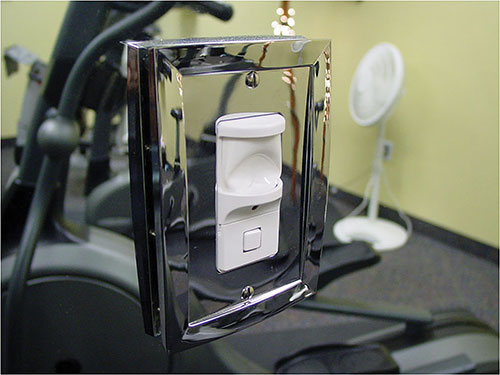
One of the main reasons that 250.4(A)(5) generally prohibits a grounded conductor from being connected to normally non-current-carrying metal parts of equipment, to equipment grounding conductor(s), or to be reconnected to ground on the load side of the service disconnecting means is to eliminate circulating currents from being introduced into the equipment grounding conductor path.
The new language at 404.22 will require the insulated grounded supply conductor to be installed and used with the proper listed electronic device. Once again, the future effective date provides the manufacturers with a reasonable time frame to produce these switching devices with grounded conductor compatibility while being able to deplete existing inventory.
The new exception will recognize a retrofit installation or replacement situation in an existing situation where the grounded conductor is not installed. In these cases, electronic control switching devices that utilize the equipment grounding conductor for powering the device would still be permitted, but only in these retrofit applications. These products have been listed and in use for years. The product standard for these devices control the amount of current permitted to be introduced on the equipment grounding conductor to no more than 0.5 mA. This exception will require these devices that permit the use of the equipment grounding conductor for powering the electronics of these devices to be listed and labeled for use in retrofit installations only where the grounded conductor is not provided in the switch device box or enclosure. Eliminating these switching devices altogether from the marketplace from the inception for 404.22 (without a future effective date) would have severely impacted the installation of important energy-saving controls in existing buildings.
Go ahead and buy that sweater! Sooner or later, conditions” will arise where you will be justified and you will need that sweater!











Find Us on Socials